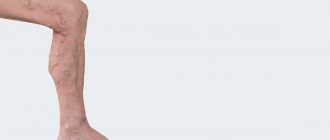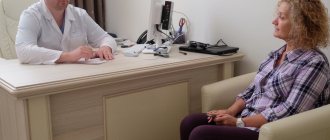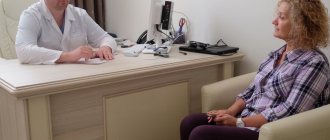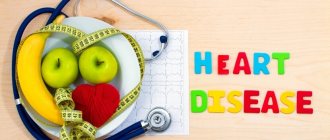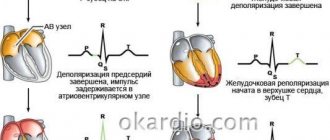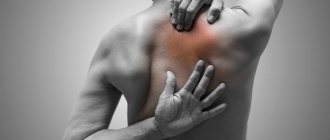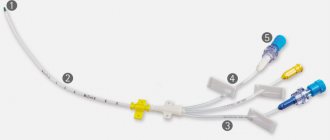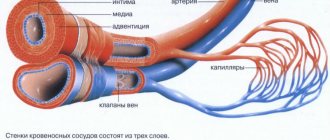Humans have veins throughout their body. Only in most cases they are securely hidden under the skin. But there are situations when they appear, and sometimes they also hurt.
Arm veins are a group of blood vessels that carry blood directly to the heart. One of their main functions is reverse circulation. That is, blood from tissues is collected both at the superficial and deep levels and sent to the heart.
In this orderly system, which works normally without interruptions or any symptoms, malfunctions may begin due to one reason or another. And then the person experiences a fairly diverse set of negative manifestations - pain, heaviness in the hands, a feeling of tightness, etc. Naturally, living with such symptoms is difficult, since hands are one of the main tools in everyday life.
Therefore, if any problems appear with the veins in your arms, you should not delay it - you need to consult a doctor as soon as possible. You can start with a therapist, but most often this problem is dealt with by a phlebologist or angiosurgeon. Despite the fact that arm vein disease is a rare phenomenon, it can significantly reduce the quality of life of the person experiencing the problem.
told AiF.ru about why the veins in the hands begin to cause discomfort to a person .
Varicose veins - an aesthetic defect or a serious disease? More details
Reasons for the problem
The reasons for the appearance of veins on the hands are of different nature. They can appear from overexertion when carrying heavy objects, overheating of a person in a bathhouse or sauna, from prolonged exposure to a hot climate, smoking, from a fragile physique or age-related changes. Most often, these manifestations are temporary and do not require serious treatment. Early changes on the hands look like blue nodules and will disappear when the provoking factor is eliminated.
But not everything is so harmless when the cause of this phenomenon is varicose veins - a disease associated with a decrease in the tone of the venous walls. Quite often, the disease is accompanied by pain, which can also be signs of other diseases: arthritis, arthrosis, chondrosis and neuritis. That is why in such a situation, correct diagnosis and appropriate treatment are extremely important.
How and why leg veins hurt
The causes of pain in the veins in the legs can be different:
- Varicose veins of the lower extremities;
- Thrombophlebitis;
- Venous thrombosis.
The veins on the top of the feet hurt in people who wear uncomfortable shoes. A vein in the leg hurts like a bruise if the integrity of its wall is damaged. In patients whose lower limbs are exposed to inadequate physical activity, the veins in the legs under the knee hurt.
How do veins hurt in your legs? Symptoms of chronic venous disease depend on the type of disease and the stage of the pathological process. In the initial stage of varicose veins, patients complain of a dull pain in the legs that appears by the end of the day. In the presence of acute deep vein thrombosis, acute pain appears in the lower leg, which intensifies with dorsiflexion of the foot or compression of the lower leg in the anteroposterior direction. In patients suffering from thrombophlebitis of the superficial veins of the lower extremities, pain appears along the inflamed, tense, dense vein. In the presence of a trophic ulcer, pain in the area of the skin defect is a constant concern.
How to determine
It is possible to diagnose the disease using studies: Doppler sonography, MRI of the veins, ultrasound of the vessels of the upper extremities. The most modern diagnostic method for the occurrence of symptoms of varicose veins and phlebitis (inflammation of the walls of the veins) is considered to be duplex sonography (ultrasound examination of blood vessels).
Is it possible to clean the vessels? More details
Why are women prone to varicose veins?
Varicose veins are diagnosed in women in approximately half of clinical cases. Reasons (5, English):
- Gender differences in endocrine status. The estrogen-gestagen hormonal background in women of reproductive age is the main predisposing factor to varicose veins.
- Features of the structure of subcutaneous fat tissue.
- The addition of other risk factors: pregnancy, oral contraception, and often hormone replacement therapy.
Female sex hormones affect the condition and tone of the vascular walls, promoting their expansion. Particular importance is attached to progesterone, the hormone of the second phase of the menstrual-ovarian cycle: its relaxing effect on the smooth muscle muscles of not only the walls of internal organs, but also blood vessels has been proven. Promotes venostasis. This is why many women more often complain of heaviness in their legs at the end of the ovarian-menstrual cycle, when the dominant sex hormone is progesterone. Estrogen also affects the condition of the vein walls, although to a lesser extent; its varicose effect can be both direct and indirect. Estrogens can increase the likelihood of immune complexes being deposited in the walls of the veins, which leads to their thickening and decreased elasticity. They also provoke vasodilation. The indirect varicose effect of estrogens includes an increased tendency to intravascular thrombus formation.
Combined changes in the hemostatic system include:
- increased fibrinogen levels in the blood;
- increased platelet aggregation even in the absence of violations of the integrity of the vascular endothelium;
- change in the ratio between various coagulation factors.
In healthy women not taking any medications, this tendency to form blood clots is minimal and has no particular clinical significance. The hemostasis system is able to compensate for it. But when other factors affecting hemostasis are added, the natural balance between thrombus formation and thrombolysis is disrupted, and blood viscosity increases. And in women this usually happens faster than in men.
Destabilizing prothrombogenic factors include:
- taking estrogen-based drugs for therapeutic purposes;
- use of COCs (combined oral contraceptives);
- liver diseases;
- various intoxications, often occurring with blood thickening;
- pregnancy.
Another factor that increases the likelihood of developing varicose veins in women is the structural features of subcutaneous fat. It is usually looser than in men, with a small number of connective tissue septa, and is prone to the accumulation of extracellular fluid with the formation of edema. In most women, the external “framework” around the saphenous veins is not able to restrain their deformation with the appearance of characteristic nodes and curvatures. If there is a concomitant difficulty in lymphatic drainage from the lower extremities, the risk of developing varicose veins increases even more.
Treatment
To treat identified diseases, minimally invasive methods are used: sclerotherapy, phlebectomy and laser therapy. Physiotherapeutic procedures are also included in the treatment: electrophoresis with venotonics and angioprotectors, darsonvalization, magnetotherapy, ultrasound treatment (destroys blood clots), balneotherapy (whirlpool and contrast hand baths with bischofite, radon, hydrogen sulfide), massage compression. Another popular method is hirudotherapy (treatment with leeches). They produce a special enzyme that has a positive effect on the circulatory system and increases the elasticity of tissue in the affected area. Despite the somewhat unconventional nature of the method, it is considered quite effective.
To choose a specific method (including surgery), it is first necessary to find out the original causes of the pathology and eliminate provoking factors. In this case, the treatment will be effective.
Question answer
Why might my arm hurt after taking blood from a vein?
Examination of patients with pain in the veins of the leg
When examining patients who have leg pain in the vein area, phlebologists pay attention to the location of the pain and the color of the skin over the vein. If a vein appears on the leg and it hurts, an ultrasound scan is performed. Doctors use 1, 2 or 3 research modes. The main one is B-mode. Additionally, color coding of blood flow or pulsed wave Doppler, as well as a combination of both, is used. The method allows you to simultaneously examine the vein in the leg that hurts, determine the direction of blood flow and its parameters. Patients who have pain and stretching of the veins in their legs must undergo an examination of the superficial and deep veins of both lower extremities.
At the Yusupov Hospital, doctors for ultrasound scanning use devices that are equipped with linear sensors with a frequency of 5 MHz and more from the world's leading manufacturers. To scan deep veins, especially in obese patients, convex sensors with a lower radiation frequency (from 3.5 to 5.0 MHz) are used.
Doppler ultrasound allows you to obtain sound information, which doctors use to judge the presence or absence of blood flow through the main veins. By changing the sound signals during functional tests, blood reflux (reverse discharge) is detected. During X-ray contrast venography, the phlebologist examines the deep and superficial veins. He receives comprehensive information about the morphological changes of the venous system. This research method is used when planning surgery in patients with blocked or underdeveloped veins. Phlebologists at the Yusupov Hospital use the technique of transfemoral ascending phlebography.
Radionuclide phlebography allows you to obtain data on the nature and direction of blood flow through deep, superficial and perforating veins under conditions that are as close as possible to physiological ones. The study is carried out with the patient standing while simulating walking. Radiophlebography allows for an integrative assessment of blood flow throughout the entire system simultaneously.
Intravascular ultrasound examination is carried out to determine the shape and extent of the narrowed segment of the vein when its patency is impaired after thrombosis or compression of the venous vessel from the outside. Infrared thermography, computer thermal imaging, radiothermometry are used as an additional method of studying patients whose cause of pain in the veins of the legs is chronic venous insufficiency. Using this method, the dynamics of the inflammatory process in tissues is monitored, as well as the effectiveness of therapeutic measures is assessed.
Important to remember!
Problems with arm veins are not a minor pathology. It can lead to a number of complications and the appearance of additional negative manifestations. Thus, in a number of situations when vein pathology is caused by problems with blood circulation, symptoms such as increased body temperature (there may be minor indicators), hyperemia of the skin, the presence of a lump or compaction at the site of the lesion, the development of edema, change in skin color, weakness muscles and the appearance of ulcers on the skin. This process can lead to the formation of blood clots, more commonly known as thrombi. And this is a condition that threatens human life, since blood clots can break off.
Don't forget about preventing the problem. After all, prevention is easier than cure. All preventive measures are aimed at preventing veins from bloating. They are aimed at reducing stress and maintaining a healthy lifestyle. So, for prevention, they recommend exercise, giving up bad habits and coffee, proper nutrition and other simple measures. If there are any disturbing signals and symptoms, you should contact a specialist as quickly as possible - this will allow you to start treatment at earlier stages and stages, when you can help the person faster and more effectively.
There are contraindications. You should consult your doctor
Filler Ellanse
The world's smartest product for contouring will help give the skin of your hands a velvety feel - an innovative filler produced by the Netherlands, Ellanse.
A distinctive feature of Ellans is that it not only restores tissue volumes lost over the years, but also stimulates the formation of type 1 youth collagen at the injection site. Namely, collagen of the first type creates the effect of velvet skin and excellent lifting.
Ellanse still has many advantages. For example, the fact that it gives immediate results, and is also not visible even under the lightest and thinnest skin and cannot be felt. In other words, no one will ever guess that you visited a cosmetologist, but they will definitely notice the beauty of your hands! Ellans is a one hundred percent biodegradable drug. After the filler has fulfilled its purpose, the stage of biodegradation begins - the complete removal of the drug from the body. But unlike other biodegradable fillers, the cosmetic effect of which steadily decreases day by day, starting from the moment of their introduction, Ellans demonstrates the stability and consistency of the effect throughout the entire period of action. And this validity period can be “programmed” depending on the individual characteristics and wishes of the patient. Ellans can be valid from 1 to 4 years. A single use of the drug is enough to get all the men in your hands!
Multicolored legs
Thin and thick, red and blue... veins on the legs. Almost every woman studied them, intently examining her legs and wondering what they were? They appear out of the blue, and every year there are more and more of them. Some try not to notice these defects, others begin to worry when they are not even visible to others. However, the fact remains: this problem affects almost every person. Many patients are very surprised when they find out that they have dilated vessels, because this can mean anything: barely visible veins, or unaesthetic varicose veins. In fact, vessels are tubular organs (channels) of various sizes through which blood or lymph moves. In this article we will only touch on blood vessels, which in one way or another appear externally on the skin. On the skin, as a rule, you can see either thin red vessels with a diameter of less than a millimeter (usually capillaries or arterioles), or vessels of blue and purple shades up to several millimeters thick; quite often much larger vessels appear - the so-called varicose veins. If they begin to change and look like ugly subcutaneous nodes and tangles, then you should think about whether varicose veins have “fell” on your poor legs?
